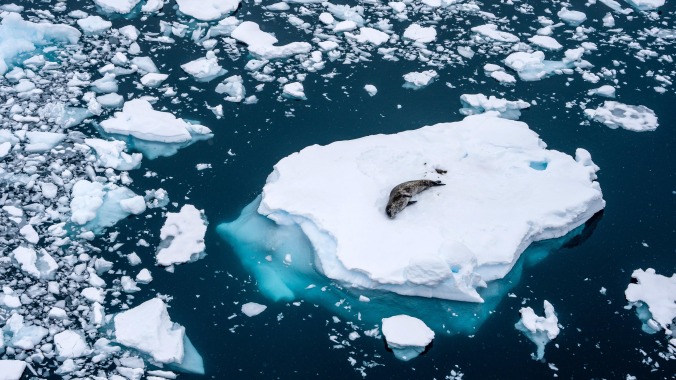Our Planet II review: A visually stunning meditation on migration
This time around, Netflix's prestigious nature docuseries focuses on animals' ancestral journeys

If you’re an animal fan, seller of high definition TVs, or a person with children, you’ve probably watched a butt-ton of nature documentaries, and by now you probably know that Silverback Films has risen to the top of the heap as the pack leader, rolling out hit after hit, from BBC’s Planet Earth to Netflix’s Our Planet, which drops its second season on June 14. If you have, say, a nephew who loves to play wildebeest-and-lion or shout, “Let’s be humpback whales!” there is so much here for you to absorb and reenact together. And if you’re a scientist or otherwise serious person, this show has got 3D-rendered interactive maps and loads of facts and data for days. And then there’s the close-up visuals of these critters, which feel almost tactile with their unarguably excellent level of detail and the program’s careful sound design to back them up. We even feel like we’re right up in a winged locust’s buggy armpit as we seem to fly among them in their migration northward to feast on every crop they can get their snappy little mandibles on. The zoomed out scenes make flocks of snow geese look like television fuzz, and hoards of the aforementioned swarming locusts look like a big, flickering cloud of nightmare yellow.
Migration: That’s the theme of this season. And its thesis? That each animal’s ancestral journey is vital to the survival of all creatures in our interconnected ecosystems. And yes, carrying on with the theme of the previous season of Our Planet, they show us the ways in which these treks have been threatened. Dwindling ice floes, barbed wire fences, and packs of predators give these guys hell. But just when you think it’s going to get dark, and we’re flying on the backs of Demoiselle cranes to Bummersville, we’re shown some hopeful human interventions and given a little break from our collective climate anxiety and despair. We lead with this because it sure has become heart-wrenching to watch some of these creature-focused documentaries in this day and age, however important they are to foster an understanding of the changing world in which we live. People tend to not do well with, you know, bad news alone.
From a narrative standpoint, a migration angle is a compelling one, too. In addition to the pure drama inherent in the hierarchy of the animal kingdom— who shall be chomped and who shall flee?—we also get tales of treacherous paths to feeding or breeding grounds. Some animals follow cues from the sun or snowmelt, others are led by the Earth’s magnetic field (which is difficult to even fathom as humans dependent on one navigation app or another). The protagonists chosen in these stories are often young or mothers of young (or mama-baby teams) to maximally play on our sympathies as viewers. It works; we are devastated when these little buggers don’t make it. But that’s nature, right? It’s cruel. The filmmakers find the poetry in it, though. “Orca. Killer Whales,” becomes a refrain in this, as we’re shown the creative ways they succeed in overcoming prey. It’s so clearly calculated, and one ceases to question the mounting orca rebellion off the coast of Spain occurring right now. We’re left thinking, “Oh, of course they would start attacking boats. Look at them!” And we learn their ramming force is equivalent to that of a freaking bus.

 Keep scrolling for more great stories from A.V. Club.
Keep scrolling for more great stories from A.V. Club.